"I have considered water-cooling, but I am afraid of leaks" - that's the most common impediment holding back many hardware enthusiasts from water-cooling. I am into water-cooling since 2004. and I still remember very clearly powering up my first watercooled rig and the tremendous anxiety: Will it work? Will it leak?! But I don't want to rant in this post about the problems I have experienced, I want to present you with solutions. Yes, it's possible to almost completely eliminate the risk of dangerous leaks, even in complex water loops like this:
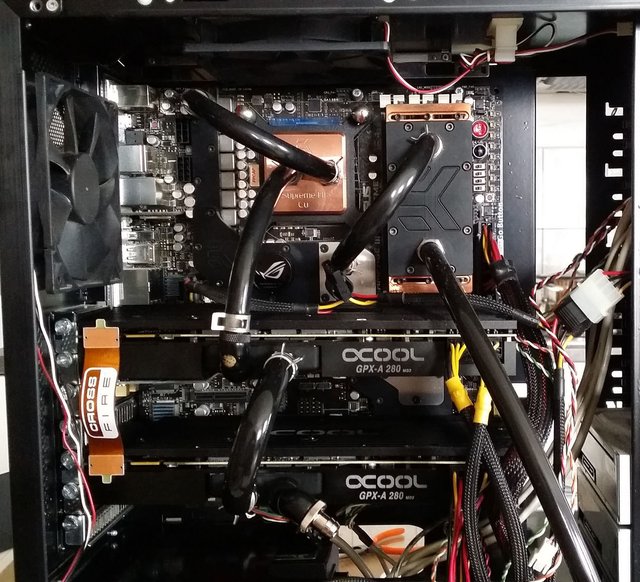
CPU, RAM, motherboard, graphic cards - everything is watercooled
First of all, what is a dangerous leak? A dangerous leak is one that occurs with your PC powered up. Short-circuit and/or shock hazard are very real threats in such situations. But what if you could test your water loop WITHOUT powering up your PC? Impossible, because the watercooling pump won't work then, right? Well, your pump won't work, that's for sure. But the much bigger pumps of your local water supplier, they work all the time. You just need to connect your PC to your bathroom faucet and you will have all the water pressure you need to test your water loop, even with your PC completely turned off. And with your PC turned off and disconnected from the power socket, there is no risk of short circuit and there is no risk of electric shock.
Probably the easiest way to do it is to use your shower tube, with shower handle removed. To do this (at least with my plumbing in Central Europe), you need 1/2" male thread to 1/4" female thread conversion fitting:
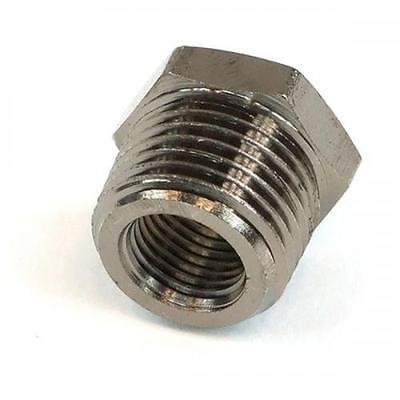
With such a fitting, it's easy to connect your shower tube to the watercooling loop in your PC. The connection will look like this:
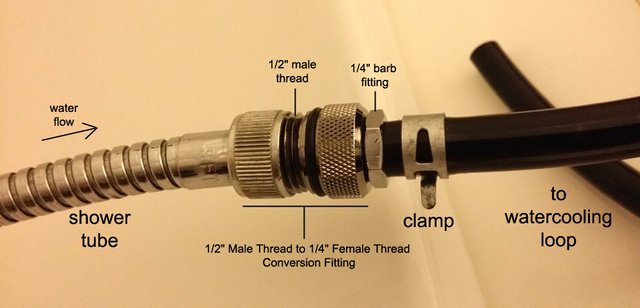
Bigger picture:
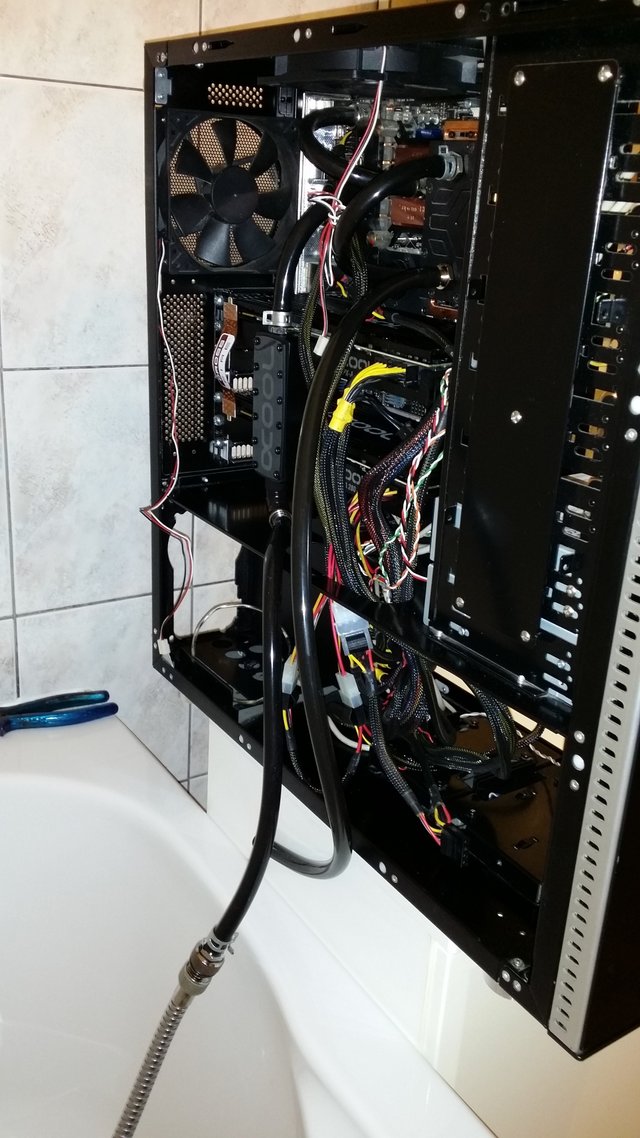
The bigger picture - one end of the watercooling loop is connected to the shower tube. Make sure the outlet end is somewhere safe too, you don't want water spilling out on your bathroom floor. I am not responsible for any damages. If you don't have some watercooling experience, don't do this.
Of course, there are other ways of connecting your water loop to your plumbing. Here is one example from Martin's Liquid Lab (UK):
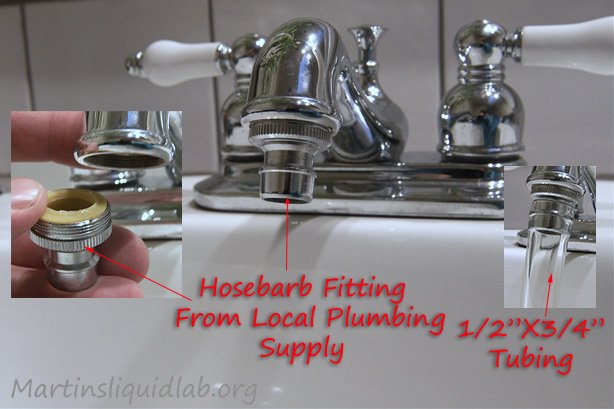
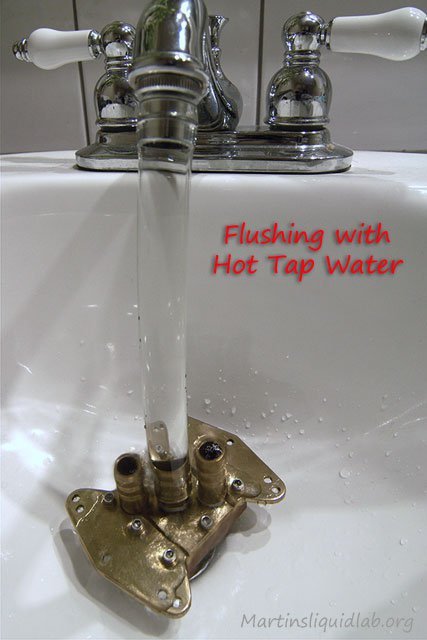
High water pressure is dangerous
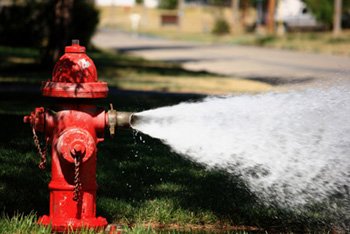
PAY CAUTION: water pressure in your plumbing is usually much higher than the pressure usually provided by typical watercooling pumps (such us Laing DDC, for example). If you open your tap fully, you will almost surely have a spraying leak somewhere. Regular PC watercooling parts aren't really designed for such high pressures, they might even crack or pop-off violently and end up flying around your bathroom, causing damage or even injury. There is a lot of water pressure behind your bathroom tap, be sure to open it very slowly and to increase water flow only gradually. In fact, do you see this Alphacool GPU bridge in 'the bigger picture'?
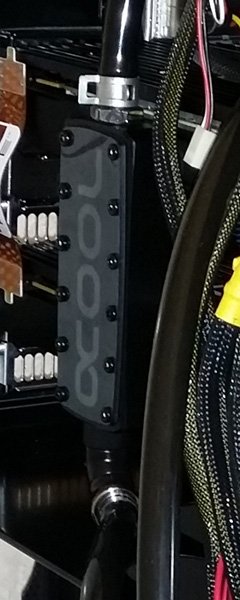
It popped right off with my tap not even half-opened! It's poorly designed, not held down by any screws, just by some friction between the fittings and the bridge itself. My advice: better avoid it, it's much too risky to have something like this in your loop. That's why you don't see this bridge in the first pic, I have removed it and connected the graphic cards with some firmly clamped 5/8" (outer diameter) tubing. Not so good looking, but much safer.
In comparison, EKWB bridges are much more robust, with very good (albeit more complex) mounting designs. I have tested them in a similar way and with my tap FULLY opened - not a single, smallest leak. That's the high-quality watercooling equipment.
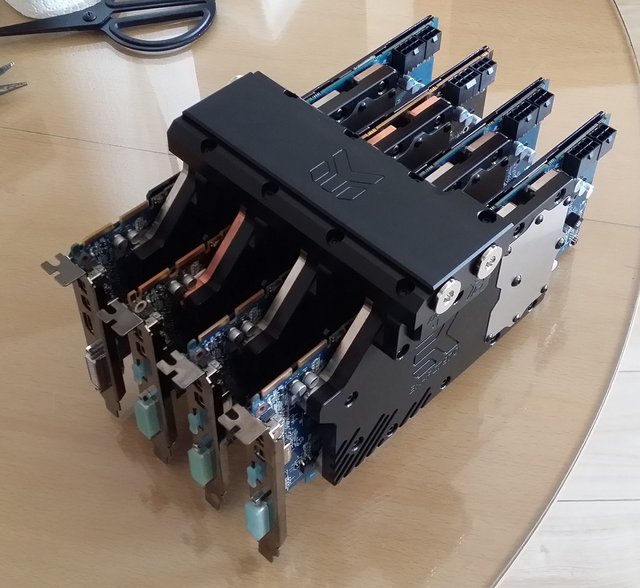
EK-FC Bridge Quad Parallel holding together four AMD Radeon HD7970 graphic cards. Fixed with eight long screws, is able to withstand much higher water pressures.
OK, so how much water pressure is safe and enough? Well, measuring it only by the water flow intensity on the outlet end, I would say something like this is adequate:
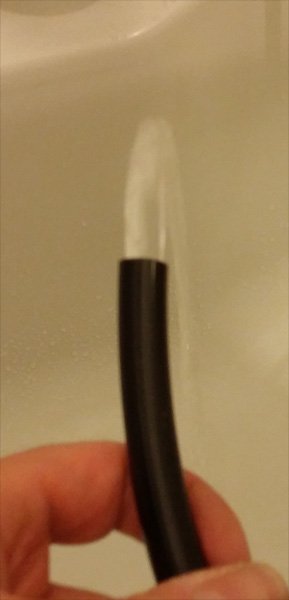
Outlet end, tube (inner diameter 3/8") is in horizontal position, water flowing freely out. Tap about one-third opened, this is already stronger water flow than in most regular watercooling setups. If you don't have any leaks at this pressure, you are most likely safe to proceed with finishing your rig and testing it with electric power on. If there is a leak, don't worry - without electricity, there can be no permanent damage. Just disconnect it, clean the water carefully, fix the leak and test it again.
Don't Mess With Electricity
Turn your PC on only when you are absolutely sure there is no residual water left. Any residual water left can still cause a short circuit or an electric shock, causing damage, injury or even death. Be sure to thoroughly clean any spilled water.
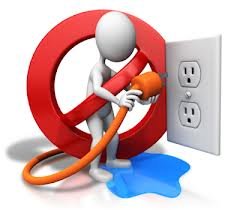
Bacteria in your loop are potentially harmful
I have to finish this article with another (less serious) warning: any tap water is usually full of bacteria. There will be some tap water left in your loop, even after careful draining. Be sure to add some concentrated biocide (like PT Nuke, for example) in your loop, after you are done with tap water leak testing.
wow that i never tought of
Downvoting a post can decrease pending rewards and make it less visible. Common reasons:
Submit
"You just need to connect your PC to your bathroom faucet"
I never thought I would hear that one
Downvoting a post can decrease pending rewards and make it less visible. Common reasons:
Submit
Well, I guess watercooling can be weird sometimes :)
Downvoting a post can decrease pending rewards and make it less visible. Common reasons:
Submit